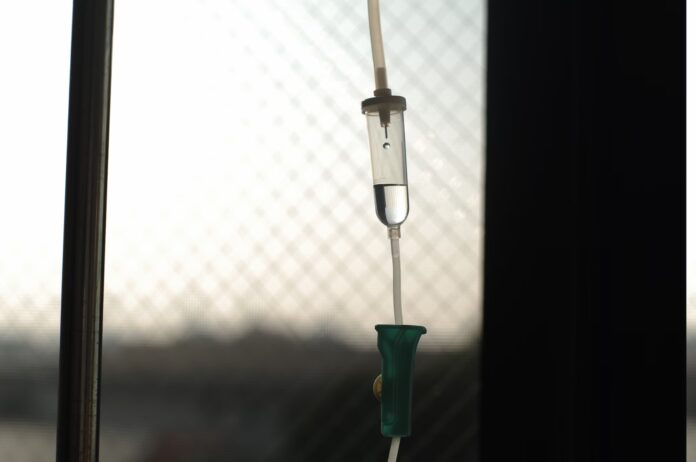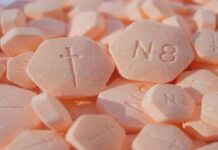Traditionally, intravenous (IV) drips were used to supply medicines into the bloodstream. But fast forward to today, IV drips have taken the market by storm due to their ability to boost immunity, lose weight, improve skin health, and enhance overall wellness.
No wonder celebs such as Kim Kardashian, Gwyneth Paltrow, Hailey Bieber, and Kendal Jenner have all tried the new wellness trend. Are you, too, planning to jump on the bandwagon? Well, that’s great. IV drips are a great way to supply your body with essential minerals, vitamins, and antioxidants.
While it’s an excellent way to get your groove back, preparing yourself ahead of the session is the key to maximizing its benefits. Here, we’ll discuss a few things you should do before your first IV drip.
#1 Hydrate
IV therapy is supposed to hydrate your body, so why should you drink plenty of water before your session?
Hydrating before an IV nutrient drip is important because it increases blood volume. Veins in the body become more prominent when the body is hydrated. Furthermore, putting in an IV doesn’t take much time in a properly hydrated body. Often, IV insertion is successful on the first try when you hydrate your body beforehand.
Staying hydrated before an IV treatment also helps prevent side effects. If you drink plenty of water on the day of your session, you’re less likely to experience headaches and fatigue after an infusion.
This ensures that your body is better prepared to utilize the nutrients delivered through the drip, promoting overall effectiveness. So, whether you’re considering a vitamin IV in San Diego or any other location, remember that starting with proper hydration sets the stage for a more seamless and beneficial experience.
#2 Eat a Good Meal
Never should you go for IV therapy on an empty stomach. That’s because many minerals and vitamins in IV therapy cause a drop in blood pressure and blood sugar. If you don’t eat a good meal one to two hours prior to your session, you’re likely to feel lightheaded after the infusion.
Having a proper meal before taking an IV nutrient drip will keep your blood sugar levels and blood pressure up. Plus, it will trigger your nervous system’s “rest and digest” section. Consequently, it dilates arteries, which allows IV nutrients to reach the deepest of tissues.
In other words, properly fueling up your body by eating the right foods before an IV session will deliver the strength it needs to absorb high doses of vitamins and minerals. Also, you won’t feel nauseated after your session.
If you aren’t in the mood for eating a good meal, grab a granola bar. As these bars are packed with dried fruits, nuts, coconut, honey, and chocolate chips, they will keep you full for long.
#3 Ask Your Doctor for an Implantable Port
Implantable ports are a type of vascular access device that is placed under the skin of patients. Those requiring longer-term IV therapy must opt for implantable ports. That’s because they reduce the risk of bleeding, bruising, and infections.
Another benefit of implantable ports is that they prevent IV fluids from leaking into nearby tissues. Moreover, you won’t need needle sticks or regular shots in your veins whenever you go for IV therapy sessions. This reduces the likelihood of damage or injuries to veins.
Also known as port-a-cath and subcutaneous ports, implantable ports make it easy for doctors to access veins. This isn’t possible if you opt for traditional peripheral lines.
Implanted ports can stay put for weeks, months, and even years and can handle up to 2,000 needle sticks. As such, it’s a wise decision to get an implantable port over central lines.
In regard to implantable ports, steer clear of Bard PowerPort. We advise you so because the brand has hit the headlines for all the wrong reasons. Reportedly, Bard PowerPort catheters are associated with numerous health risks.
Deep vein thrombosis (DVT), arterial puncture, pulmonary pseudoaneurysm, hemothorax, and tachycardia are a few complications related to the Bard PowerPort device, notes TorHoerman Law.
Parent companies and manufacturers of Bard PowerPort are facing a stream of lawsuits. In the Bard Power Port lawsuit, plaintiffs allege that catheter fracture has led to polyurethane pieces circulating in the bloodstream, causing significant internal damage. Scientific studies link implantable catheters to blood clots, chest pain, and blockages in the lung arteries.
In most cases, life-threatening surgeries are required to extract catheter pieces from pulmonary and cardiac tissue.
#4 Avoid Over-the-Counter Medications
Before an IV session, you should avoid taking decongestant and antihistamine drugs.
While these over-the-counter drugs work well in clearing nasal congestion, alleviating headaches, and relieving allergy symptoms, they narrow the blood vessels. As such, IV nutrients won’t reach the deep tissues. However, if you can’t avoid them, inform your doctor beforehand.
Wrapping Up
For first-timers, receiving an IV nutrient drip could be intimidating. However, there isn’t anything to worry about. You will experience a slight discomfort or feel pain when an IV needle is inserted. But it won’t last long and will pass once the IV is in place.
Just make sure to drink lots of water, eat a proper meal, and dress comfortably before the session. In case of any queries or concerns, get in touch with your doctor. Also, let them know the medications that you’re taking, if any. Rest assured that the session will be smooth, less painful, and complication-free.







